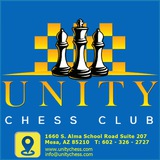The knight heads for d4, but this does not bring great benefits, since the other black pieces are uncoordinated, especially his rooks.
It was stronger to open up the bishop with 14...e4, or stop the white pawn by 14...Nd7.
It was stronger to open up the bishop with 14...e4, or stop the white pawn by 14...Nd7.
Black has no moves to strengthen his position, so White permits himself some prophylaxis – the king moves away from the knight check.
21...b4 22.Be2! f3 23.gxf3 Nxe2 24.Qxc5 Nf4 25.Qf5 Ng6 26.h5 Qxe7 27.hxg6
Unity Chess Club
Anatoly Karpov 2700 Jan Timman 2645 Brussels 1986 White to move
Black threatens perpetual check, so White must seek a way to advance his pawn with tempo.
Promoting to a queen is no good, so we promote to a knight! The white forces are sufficient to cope with the lone black queen.
87...Ka7 88.Rc7+ Kb8 89.Rd7 Qb1+ 90.Kc4 Qf1+ 91.Kd5 Qf3+ 92.Kd6 Qf8+ 93.Ke6 Qh6+ 94.Kxe5 Qe3+ 95.Kd6 Qf4+ 96.Kc5 Qe3+ 97.Kc4 Kc8 98.Nf7 Qe4+ 99.Kc5 Qe3+ 100.Kc6 Qxc3+ 101.Kb6 Qe3+ 102.Ka6 Qe6+ 103.Nd6+ Kb8 104.Rd8+ Kc7 105.Rc8+ 1-0
Unity Chess Club
Vasily Smyslov Mikhail Botvinnik Moscow ch-URS 1941 Black to move
Both sides’ passed pawns are very far advanced, and each is a potential queen. Therefore, to gain a tempo, Black sacrifices a rook:
58.a7 d2 59.Rg1 c2 60.Rb8 c1=Q 61.a8=Q Qxg1+ 62.Kxg1 d1=Q+ 63.Kg2 Rc2+–+.
